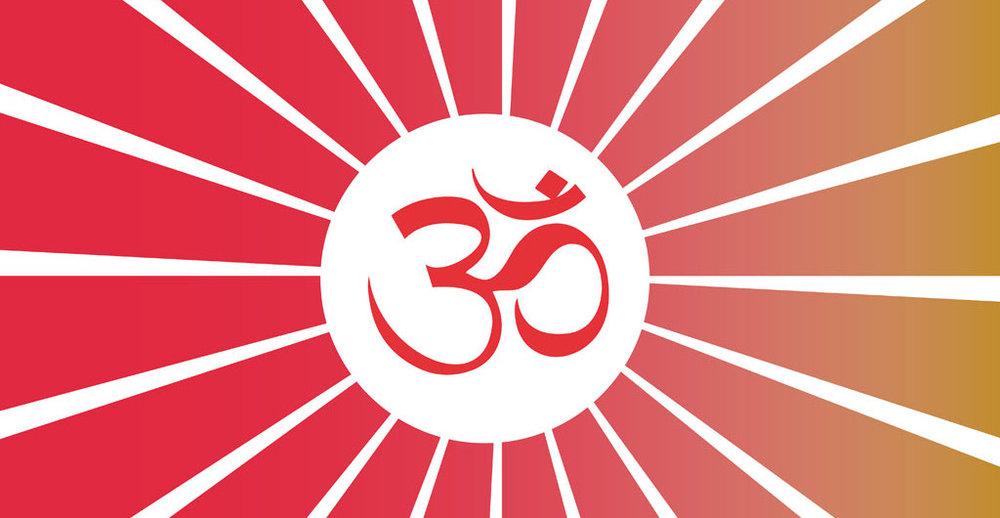A couple of years ago, I had the opportunity to conduct a 3-part interview series with renowned Vedic scholar Jeffrey Armstrong.
Jeffrey refers to himself as a Western Scholar of Eastern Wisdom. I’ve had the opportunity to spend time and learn with him at monthly talks he hosts at his home in Vancouver, Canada.
His mission is to make the knowledge and yogic rituals from the ancient Vedic library of knowledge accessible to everyone. As an elder approaching the age of 70, he wants to pass on this valuable knowledge to a younger generation who can use it to build a more balanced and sustainable world.
In these interviews, I talk with Jeffrey about the ancient Vedic library of knowledge and its relevance today for solving the crisis of health, civilization, and consciousness facing the world today.
The Vedas are the world’s oldest library of knowledge and they provide a guide to living an optimal life and developing the self-knowledge required to free our minds from illusion and greed.
The knowledge in these legendary sacred texts has inspired many creative minds, including Albert Einstein and Nikola Tesla. The Vedic library of knowledge is the foundation for Yoga, Ayurveda and many of the meditation practices used around the world today.
1. An Introduction to the Vedas
In my initial interview with Jeffrey, he introduces the ancient Vedic library of knowledge and why it is relevant in today’s world.
Discover the fascinating history of ancient India and how The Vedas have had a profound influence on the development of modern science, eastern philosophy, and even many western philosophical traditions.
Interview Outline:
1. An Introduction to why we decided to create the Vedic Podcast.
2. Sanskrit: the most mathematically precise language for encoding knowledge.
3. The ancient connection between India and Europe and the origin of religions.
4. Mentioned: The Carl Sagan video on Ancient India’s Cosmology.
5. An ancient library of oral and then written knowledge passed down through time.
6. Influential modern German scientists studied Sanskrit instead of Latin.
7. The ancient library of the Veda pre-dates Rome and Greece.
8. How Vedic knowledge and Indian culture were suppressed by colonialization.
9. Mentioned: A history book on the New World called Indian Givers.
10. India as the mother of all the world’s cultures.
11. The library of Alexandria, why it was burnt down and the crossroads of civilizations.
12. The Vedic idea of God in everything and as a unified field of consciousness.
13. Yoga means connection and it comes from the Vedic library of knowledge.
14. We are wirelessly connected to the Universe, we just need to know how to tune in.
15. Energy, matter and Albert Einstein’s route to discovering the Theory of Relativity.
16. The Vedas as ancient software encoded to activate our full potential as human beings.
17. Three questions: Why are we here, where are we going and what are our possibilities?
18. The word Veda (it means to see) gives us the English word video.
19. The ancient Vedic teaching system and the system of questions and answers.
20. The importance of applying knowledge in action and not becoming dogmatic.
21. Ayurveda: the Vedic science of how to live your life in an optimal state.
2. How Can We Create A Sustainable Civilization?
Are we advancing toward our own destruction? How can we reverse our course? Fortunately, there is a lot of indigenous knowledge and ancient wisdom buried by our civilization that can help us build a more sustainable world.
In the second interview, Jeffrey talks about the world’s addiction to non-renewable fossil fuels and how we use this energy to live beyond our means. He also talks about what a solution would look like that would bring us into a more sustainable balance with nature.
Interview Outline:
1. Long-lasting ancient civilizations nurtured a state of balance.
2. The Vedic culture goes back over 10,000 years.
3. How we use non-renewable energy to live beyond our means.
4. The ratio between how much energy you take, burn and the waste generated.
5. The world is a “heroin addict” addicted to the ancient deposits of fossil fuel energy.
6. The 3 Gunas: The three states, changing processes and dissolution of matter.
7. Rajas: The creation of matter. Anabolism. Generation.
8. Tamas: The destruction of matter. Recycling.
9. Satva: The balance and tuning of matter. Synchrony.
10. The dilemma of living in the material world. Limited resources.
11. These three Gunas as the basis of a material science.
12. Their similarity with the two laws of thermodynamics.
13. Non-renewable energy and the rise of addictive consumerism.
14. Planned obsolescence and the huge mess being left for the future.
15. Mentioned: Politicians discussing global warming.
16. Mentioned: Abundance: Why The Future Is Better Than You Think
17. Mentioned: The Third Industrial Revolution (video)
18. The word Industry comes from the Indus Valley.
19. Growth rate, maintenance rate, and recycling activities in balance.
20. Tamasic: a state of ignorance from unconsciousness and lack of knowledge.
21. All matter is going from a higher energetic state to a lower one and generates heat/waste.
22. The law of entropy: all things within matter are tending to go downhill.
24. Usury: against charging more interest on a loan than a farmer could yield each year.
25. The difference between life as a parasite and a symbiote.
26. The laws of sustainability as passed down for thousands of years.
27. We are intoxicated on fossil fuels, drunkenly staggering through time toward disaster.
28. The city of 9 gates and the goal of yoga. You are sitting at the center of this organic metropolis.
29. Trillion of cells in this “organic metropolis” managing creativity, entropy and sustainable balance.
30. Bringing your body to sustainable ecological balance. Satva: The balance point.
3. An Ayurvedic Perspective on Food and A Healthy Diet
Ayurveda is the area of the Vedic library of knowledge concerning food, a healthy diet, and optimal well-being. The Ayurvedic perspective on food and healthy eating is focused on preventative medicine, in contrast to Western allopathic medicine, which is more focused on fixing problems and diseases when they occur.
Contrary to popular belief, the ancient Indo-Aryan people who wrote the Vedas weren’t entirely vegetarian but they did limit the amount of meat in their diet. This long-lasting ancient culture survived by finding a sustainable balance with the natural environment. A big part of this harmony and balance with the land was created by their Ayurvedic holistic health and dietary practices.
Interview Outline:
1. Food is the energy capture system of the Planet.
2. Technology is now sophisticated enough to let corporations modify our food for profit.
3. The profit-motive has corrupted our food supply: Instead of well-being driving growing of food, profit does.
4. Tamas: darkness Rajas: Enlivenment Satva: light (Enlightened means someone’s system is running on light)
5. We live on sunshine, food is a delivery mechanism for light energy.
6. Mentioned: The China Study – Found that as soon as the amount of meat exceeds 20% of diet, the markers of cancer appear for nearly everyone tested.
7. Fats that come from beef and pigs don’t digest easily. Waste materials clog your brain and organs.
8. Pyramid of human food: beef is the least efficient protein of all foods humans eat in terms of resource usage.
9. The fat of beef clogs the prostate, the breast, and the brain. Causing stagnation.
10. Beef is a luxury: builds your muscles and makes you feel strong.
11. Soil is stripped of minerals and nutrients by modern agriculture.
12. Herbs activate the healing centers of the brain. The flavors of the herbs is what does the activation, in a capsule you don’t get the same effect.
13. The different flavors: sweet, sour, salty, pungent, astringent, bitter.
14. The Western diet mostly sweet, sour, salty, pungent. Very few foods that astringent or bitter. These food bring the system to balance.
15. Bitter is the missing medicine for most people. Bitter tasting tinctures and foods can bring your body to balance.
16. A big part of The French Revolution was about diet, the rich class gorging themselves on meat and the unequal distribution of food.
17. McDonald’s is a simulated beef. If a McDonald’s hamburger wasn’t subsidized by the government would cost roughly $17. A substitute beef for the poor to feel they are eating rich.
18. The Ayurvedic body types and how it affects what kind of food and nutrition different kinds of people need.
19. TCM: Traditional Chinese Medicine was preserved in China because Mao had an eye infection that couldn’t be cured by allopathic medicine. TCM cured his eye infection right away so he preserved and systematized the system.
20. In India, the British made Ayurvedic medicine punishable by death. They didn’t want competition.
21. In Canada and the United States, you can import TCM medicines (under the Grandfather clause) but you can’t do the same for Ayurvedic medicine from India.
22. Mentioned: Inexpensive TCM and Ayurvedic remedies for indigestion, headaches, sore throats and flu.
23. Coffee pushes adrenaline out of the adrenal glands and exhausts your adrenal system over time. Tonics like Ginseng can restore this energy naturally.
24. Mentioned: Dragon Herbs
25. The ancients had a deep understanding of the effect of food on us and our environment.
26. Animals fats clog and block the prostate in men and the breast in women.
27. Mentioned: Panchakarma – an Ayurvedic practice for refreshing and rejuvenating your body.
28. Huge amounts of modern people’s health problems come from long-term dehydration. Things don’t move properly through their body.
29. Factory farming: did the food you eat have a life, or is it lifeless, toxic and full of misery?
Namaste. Thank you for listening!
- The 10 Best Pomodoro Timer Apps For Remote Workers - April 11, 2025
- Hacking The Flow Cycle: Brainwaves, Creativity and Flow States - April 11, 2025
- 100 Best iPhone Education Apps For Self-Directed Learning - April 10, 2025





 This website uses cookies to improve your web experience.
This website uses cookies to improve your web experience.